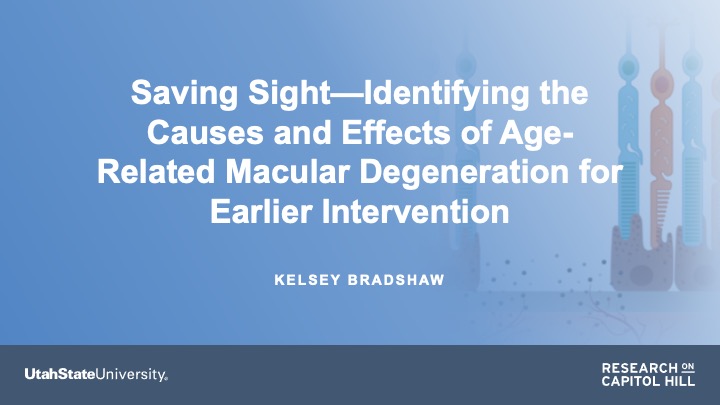Title: A Computational Model of Neovascularization in Wet Age Related Macular Degeneration
Name: Kelsey Bradshaw
Mentor: Elizabeth Vargis
The central part of the retina consists of three layers; photoreceptors, retinal pigment epithelium (RPE), and Bruch’s membrane. Age-related macular degeneration (AMD) is a degenerative disease of the retina’s photoreceptors and RPE and is the leading cause of vision loss and blindness in developed countries. In the early stages of AMD, extracellular debris called drusen form between the Bruch’s membrane and the RPE. These debris can lead to mechanical stress and RPE death. The remaining RPE cells respond to this stress and neighboring cell loss by overexpressing vascular endothelial growth factor (VEGF). VEGF is a proangiogenic factor that stimulates the formation of new blood vessels. These new abnormal vessels leak blood into the retina and cause blindness. This disease state is known as wet AMD and treatment includes monthly eye injections which usually can only maintain the eye in its current condition. My research focuses on gaining a better understanding of the cause and effects of AMD to achieve an earlier diagnosis. I am developing probabilistic computational models to analyze and predict the effects of overexpression of VEGF by RPE cells on blood vessel growth in wet AMD. Based on production rates of VEGF by the RPE, the model will be able to simulate the extent of blood vessel growth. The model will be able to test many parameters in a short amount of time and identify those that are the most important to be studied in the lab, thus guiding experimental research to drastically reduce time and cost. Given the current conditions of a patient, the model can predict the future extent and severity of the disease leading to an earlier diagnosis and treatment, which could potentially save the patient’s vision.



